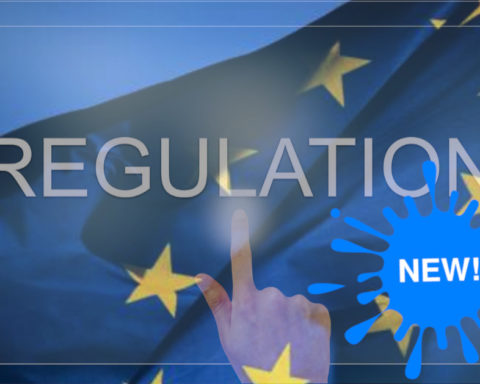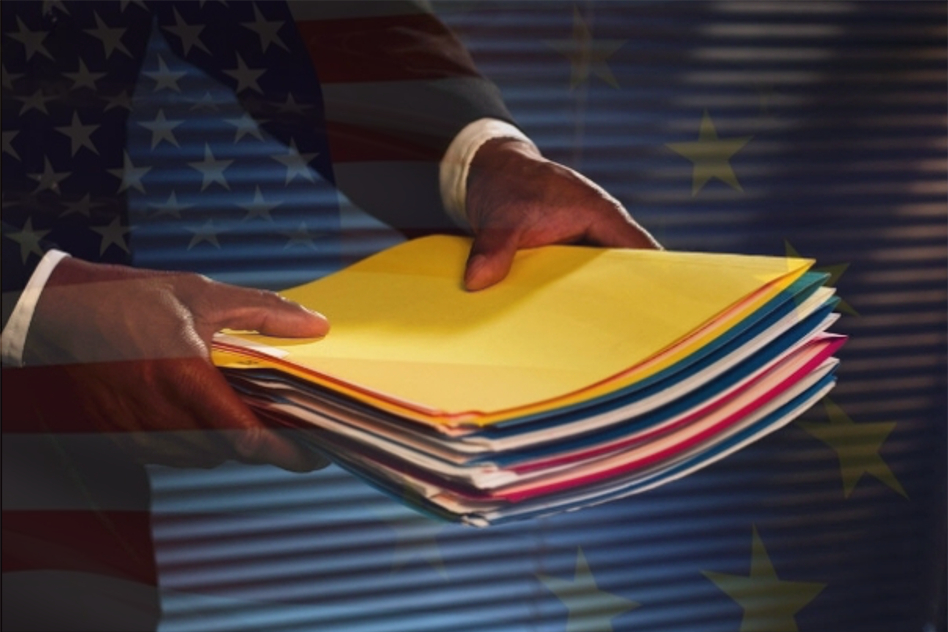On 16 January 2017, the European Commission published its latest update of the TARIC CN-DU Correlation Table which establishes links between the customs classification codes (HS/CN) and export control classification codes (ECN).
 By Bert Gevers, Yassine el Bojaddaini & Megan Gajewski Barnhill , 21 February 2017.
By Bert Gevers, Yassine el Bojaddaini & Megan Gajewski Barnhill , 21 February 2017.
As this correlation table sometimes confuses exporters when determining whether an item is controlled for export , we thought this a good occasion to remind readers of the mechanics of the respective systems. Although the correlation table generally gives a useful ‘indication’ that a certain item could be subject to export control licensing, it should be noted that the two classification systems are in fact very different in scope and objectives.
Customs classification
The Customs Harmonized Commodity Description and Coding System generally referred to as “Harmonized System” (“HS”) is a product nomenclature which aims to categorize traded items on the basis of their objective characteristics. The system is developed and maintained by the World Customs Organization (WCO) and governed by “The International Convention on the Harmonized Commodity Description and Coding System”. This Convention ensures that each contracting party undertakes to ensure that its customs tariff and statistical nomenclatures will be in conformity with the HS. It is currently used by more than 200 countries and over 98 % of the merchandise in international trade is classified in terms of the HS.
The system identifies (groups of) goods by a 6-digit code, of which the first four digits correspond to the relevant heading, while the fifth and sixth digits identify the subheadings. As the number of digits increases, the description of the characteristics of a particular item is further specified.
Let us take the example of routers, an item that has already been the subject of an earlier post in this blog.
| Heading | 85.17 | Telephone sets, including telephones for cellular networks or for other wireless networks; other apparatus for the transmission or reception of voice, images or other data, including apparatus for communication in a wired or wireless network (such as a local or wide area network), other than transmission or reception apparatus of heading 84.43, 85.25, 85.27 or 85.28. |
| Subheading | 85.17.62 | Machines for the reception, conversion and transmission or regeneration of voice, images or other data, including switching and routing apparatus |
The HS is not only a universal, but also comprehensive system which aims at classifying all commodities that are traded internationally. Items which are not mentioned explicitly in a subheading are covered by residual codes, which often include “not elsewhere specified” or “other” and which refer to a (sub)heading that covers every possible commodity under a particular heading which is not described by another subheading. If parties to the HS want to further fine-tune the classifications, they can do so by adding more detail (e.g. digits). The EU has for example implemented TARIC which provides up to 10 digits. (TARIC: 8517.62.0000)
Export Control Classifications (‘ECN’ or ‘ECCN’)
ECN’s are used solely to identify items which are subject to export control requirements. Unlike HS classifications they are, as a rule, neither universal nor comprehensive. Although there is to a certain extent harmonization among the control lists of various countries based on their participation in multilateral export control regimes like the Wassenaar Arrangement or the Australia Group, export controls remain in essence national controls targeting a limited number of items. Commodities that are traded at high volumes world-wide are generally not controlled. After all, the desired effect of such controls is minimal as such goods can easily be obtained elsewhere.
The European Union has gone to great efforts to integrate the separate multilateral control lists in its common EU list of controlled items (Annex I of Dual Use Regulation 428/2009). A similar consolidated list approach is also used by many other jurisdictions, including the United States. However, certain differences exist between the lists. For instance, the U.S. Commerce Control List (“CCL”) includes certain items which are not listed on the EU common control list.
Each entry on the EU common control list consists of a 5-character ECN. The first character corresponds to the topical category for the item. The EU common control list is divided into 10 topical categories (likely extended to 11 categories if the new EU Dual Use Regulation is adopted).The second character corresponds to the type of item (for example, D corresponds to software), while the third character identifies the multilateral regime pursuant to which the item is controlled (for example 0= Wassenaar Arrangement). The remaining two characters correspond to the particular description of the controlled item.
| Topical Category | Subcategory | Regime origin |
| 0= nuclear materials | A= systems, equipment and components | 0= Wassenaar Arrangement |
| 1= materials, chemicals, ‘micro-organisms’ and ‘toxins’ | B= test, inspection and production equipment | 1=Missile Technology Control Regime |
| 2= materials processing | C= materials | 2= Nuclear Supply Group |
| 3= electronics | D= software | 3= Australia Group |
| 4= computers | E= technology | 4= Chemical Weapons Convention |
| 5= telecommunications and information security | ||
| 6= sensors and lasers | ||
| 7= navigation and avionics | ||
| 8= marine | ||
| 9= aerospace and propulsion |
Controlled items can be further specified beyond this 5 character code through the addition of further subheadings within each ECN. If we take the example of routers, the ECN is 5A002 (i.e. “Information security systems, equipment and components therefor, as follows”).
| Topical Category | Subcategory | Regime Origin | Specification | Specification | Further specifications |
| 5
(Telecommunications and information security) |
A
(Systems, equipment and components) |
0
(Wassenaar arrangement) |
0
|
2
|
a…
|
The HS/ECN correlation table: Sense or no(n)sense
While a single item will only have one corresponding HS classification and one ECN, using the correlation table may not always provide clear guidance for a particular item. As explained above, because the scope and purpose of both classification systems are different, the two systems do not always correlate directly with one another. If we take our example of routers you will see in the correlation table that ECN 5A002 is linked to 79 different HS/CN classifications. On the other hand, one HS/CN classification can relate to several ECNs. HS/CN 85.17.62.0000 relates for example to 8 different ECN’s in the correlation table (limiting to 5 digits). On top of that an HS/CN classification under 85.17.62.0000 does not automatically result in an ECN classification since the use (and user) of the item will also be a decisive factor to determine whether an item is controlled or not. Hence, it remains important for exporters to review the specific HS and ECN codes for their items to ensure that the correct codes are being identified.
For completeness sake, we have summarized some of the main differences:
| HS/CN | ECN |
| Comprehensive | Targeted |
| Universal | National (limited harmonization) |
| Tangibles | Tangible + intangibles (software, technical assistance, …) |
| General Rules of Interpretation | Classification predominantly on the basis of technical features |
| Only new 6 digit heading if trade volume exceeds a certain threshold | Classification based on technical features that are deemed sensitive enough to warrant controls |
Conclusion
Although some dream of an automatic link between the two systems, this is certainly not (yet) the case and implementing such a link would require substantial changes in the current mechanics of the HS system. In order to avoid ‘correlation errors’, exporters will have to continue their ECN homework. Readers who want to learn more about the links between ECN and HS are certainly recommended to consult two recently published contributions in the most recent issue of Strategic Trade Review. [1] [2]
[1] H. Kim, Enhancing the Interface between the Harmonized System and Strategic Trade Controls, STR Volume 2, Issue 3, Autumn 2016.
[2] R. Chatelus & P. Heine, Rating Correlations Between Customs Codes and Export Control Lists: Assessing the Needs and Challenges, STR Volume 2, Issue 3, Autumn 2016.
Authors of this post are:
- EU to control export of COVID-19 vaccines amid supply crisis - February 1, 2021
- Belgium (finally) implements sanctions for violation of the EU Blocking Regulation - June 3, 2019
- Meet OFAC in Brussels and discuss the disruption of export control & sanction regimes by new technologies on 11 June 2018 - May 4, 2018








